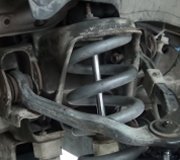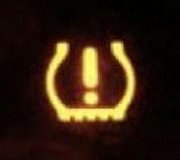As an alignment and suspension specialist, I never looked at the sticker on the car. Those tire pressures are the lowest safe pressure to provide the most comfortable ride. You never want to go lower than what's on the sticker but you also have to understand tires are built differently and support the same amount of weight with different pressures. As an example, many cars come from the factory with tires rated at 44 psi max. I always set those at 40 psi and never had a complaint of ride quality or handling. Some brands of replacement tires have a maximum rating of 35 psi. I always set those at 35 psi. Imagine if the manufacturer put "40 psi" on the door sticker. If you automatically went by that sticker, that 35 psi tire would be 5 pounds over-inflated. Common sense says there is likely to be no failure because those pressures are for a cold tire and are expected to rise well above that minimum pressure after prolonged highway driving. Logic, however, says that if a thousand tires start out over-inflated, a few of them are more likely to blow out. If that five pounds was really that big of a deal, you'd be reading about blown tires every day and the idiot politicians would stick their noses in it. That's what happened with the Firestone tires on Ford Explorers. Those tires were failing from overheating due to pressures that were too low, but that was the pressures specified by Ford. Ford has messed up a lot of stuff over the years in order to trick people into thinking their cars ride smoother than their competitors'. The result of that one disaster gave us the complicated variety tire pressure monitoring systems on cars today. Drivers can't be bothered to take responsibility for checking the air pressure once in a while so the politicians put another mandate on the overburdened manufacturers.
It sounds to me like your mechanic has your best interest at heart. Before you want to disagree with the expert, look on the sidewall of the new tires for the really tiny writing that says "maximum load 1746 pounds at 44 psi". If you see that "44 psi", that tire has a softer and more flexible sidewall than a tire with a 35 psi max. Rating. It needs higher air pressure, not to support the weight of the car, but to reduce the amount of flexing with each revolution, and therefore reduce heat build-up which leads to blowouts. Higher pressures provide less rolling resistance, improved handling, but reduced comfort. Cars from the last 20 years have suspension systems far superior to older cars and ride quality is hardly compromised by a few extra pounds in the tires.
Sunday, March 17th, 2013 AT 11:41 PM



